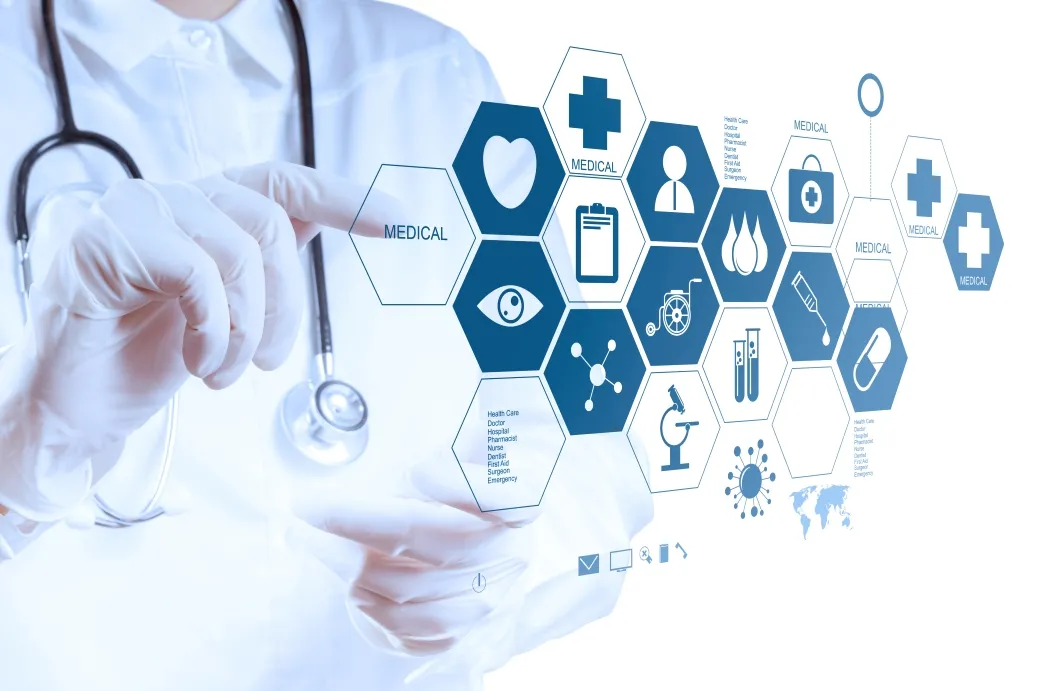PARP (Poly ADP-Ribose Polymerase) Inhibitor Market 2025: Comprehensive Analysis and Growth Outlook
The PARP inhibitor market is rapidly emerging as a vital segment within the oncology therapeutics landscape. PARP inhibitors represent a breakthrough in targeted cancer treatment by disrupting DNA repair mechanisms specifically in cancer cells, leading to selective tumor cell death. This innovative approach offers promising therapeutic options especially for cancers with genetic vulnerabilities such as BRCA mutations.
As the healthcare industry moves towards precision medicine, the demand for PARP inhibitors continues to grow steadily. By 2025, this market is expected to expand significantly, driven by rising cancer prevalence, enhanced diagnostic tools, and increasing adoption of personalized therapies worldwide.
Key Market Drivers
The growth of the PARP inhibitor market is fueled by several pivotal factors:
- Rising Incidence of Target Cancers: Increasing global prevalence of breast, ovarian, prostate, and pancreatic cancers with DNA repair deficiencies is driving demand. Improved genetic testing has helped identify patient populations that benefit the most from PARP inhibitor therapy.
- Advancements in Precision Oncology: The shift towards personalized treatment strategies is a major catalyst. PARP inhibitors exemplify targeted therapy by leveraging genetic mutations, aligning with the broader trend of customized cancer management.
- Regulatory Approvals and Expanding Indications: Recent regulatory endorsements for new uses of PARP inhibitors, such as in prostate and pancreatic cancers, broaden market potential and boost physician confidence in these therapies.
- Rising Healthcare Investments: Governments and private sectors are investing heavily in cancer research and treatment infrastructure, improving accessibility and adoption rates for novel therapies.
- Patient Preference for Less Toxic Treatments: Compared to traditional chemotherapy, PARP inhibitors often offer fewer side effects, which appeals to patients and clinicians alike.
Innovations Driving Market Growth
Innovation remains the backbone of the PARP inhibitor market’s evolution:
- Next-Generation PARP Inhibitors: New compounds with enhanced efficacy, improved safety profiles, and greater bioavailability are under development to address limitations of current drugs.
- Combination Therapies: Clinical trials are increasingly focusing on combining PARP inhibitors with immunotherapies, chemotherapy agents, and targeted drugs. These combinations aim to overcome drug resistance and improve patient outcomes across multiple cancer types.
- Companion Diagnostics: Breakthroughs in genetic testing and biomarker identification enable precise patient selection, optimizing therapy effectiveness and minimizing unnecessary treatment.
- Expansion Beyond BRCA Mutations: Research is exploring PARP inhibitors’ role in tumors with other DNA repair deficiencies, potentially broadening the eligible patient pool.
Regional Market Dynamics
The global PARP inhibitor market demonstrates varied dynamics across regions:
- North America dominates due to a high incidence of target cancers, strong healthcare infrastructure, and rapid adoption of innovative treatments. Robust clinical research ecosystems and favorable reimbursement policies further propel growth.
- Europe follows closely with well-established oncology care systems and growing awareness among healthcare providers. Countries with comprehensive genetic screening programs exhibit higher uptake of PARP inhibitor therapies.
- Asia-Pacific is the fastest-growing region, driven by increasing cancer rates, expanding healthcare access, and rising government initiatives promoting advanced treatments. However, challenges like cost sensitivity and uneven healthcare infrastructure persist.
- Latin America, Middle East, and Africa show emerging opportunities with growing awareness and demand, though economic constraints and regulatory hurdles temper immediate growth potential.
Strategic Considerations for Market Participants
For companies and stakeholders aiming to thrive in this competitive landscape, several strategic factors are critical:
- Collaborative Partnerships: Alliances between pharmaceutical firms, diagnostic companies, and research institutions can accelerate drug development and patient identification.
- Regulatory Navigation: Proactive engagement with regulatory agencies to secure timely approvals and clearances is essential for market access.
- Education and Awareness: Initiatives targeting oncologists, healthcare providers, and patients will foster broader acceptance and utilization of PARP inhibitors.
- Pricing and Reimbursement: Tailored strategies to address pricing sensitivities, especially in emerging markets, will be pivotal to expand reach.
- Focus on Clinical Evidence: Continued investment in clinical trials exploring new indications and combination therapies will maintain competitive advantage and support market growth.
Conclusion
The PARP inhibitor market is set for remarkable growth through 2025, fueled by the convergence of rising cancer incidences, advances in genetic testing, and the shift toward precision oncology. Innovations in drug development and diagnostic technologies, combined with strategic regional approaches, are reshaping cancer treatment paradigms globally.
Market participants who embrace innovation, collaborate effectively, and tailor strategies to regional needs will unlock significant opportunities. Ultimately, the expanding PARP inhibitor market promises to enhance cancer care, offering hope and improved outcomes for patients worldwide.
NOTE:
Quants and Trends is proud to offer an extensive portfolio of meticulously researched healthcare market reports, numbering in the thousands. We also provide tailored customization services to ensure our insights align precisely with your strategic objectives and informational needs. For personalized assistance or to discuss your specific requirements, we invite you to get in touch with our team. We also encourage you to request a complimentary sample PDF report. Please visit our Sample Request Page to receive yours today.
Key Market Players
AstraZeneca
Tesaro
Merck & Co
Clovis Oncology
Pfizer
GSK
Zai Lab
Segmentation By Type
Lynparza
Zejula
Rubraca
Talzenna
Other
Segmentation By Application
Ovarian Cancer
Breast Cancer
Other
Segmentation By Region
North America (United States, Canada and Mexico)
Europe (Germany, France, United Kingdom, Russia, Italy, and Rest of Europe)
Asia-Pacific (China, Japan, Korea, India, Southeast Asia, and Australia)
South America (Brazil, Argentina, Colombia, and Rest of South America)
Middle East & Africa (Saudi Arabia, UAE, Egypt, South Africa, and Rest of Middle East & Africa)
Market SWOT Analysis
What are the strengths of the PARP Inhibitor Market in 2025?
The PARP inhibitor market is expected to benefit from significant advancements in personalized medicine, offering targeted therapies for cancer treatment. Additionally, strong clinical trial data supporting the efficacy of PARP inhibitors in various cancers, such as ovarian and breast cancer, will likely drive market growth.
What are the weaknesses of the PARP Inhibitor Market in 2025?
One challenge is the high cost of PARP inhibitors, which may limit accessibility for some patient populations. Additionally, resistance to PARP inhibitors in certain cancer types may hinder long-term effectiveness and market penetration.
What are the opportunities for the PARP Inhibitor Market in 2025?
There are opportunities for expanding the use of PARP inhibitors into other indications, such as prostate cancer and other solid tumors, through ongoing clinical trials. The increasing adoption of combination therapies could also open new avenues for market growth.
What are the threats to the PARP Inhibitor Market in 2025?
Competition from other treatment options, such as immune checkpoint inhibitors and targeted therapies, may threaten market share. Furthermore, regulatory challenges or delays in approval of new indications for PARP inhibitors could slow down market expansion.
Market PESTEL Analysis
What are the political factors affecting the PARP Inhibitor Market in 2025?
Political factors such as healthcare policies, drug pricing regulations, and government support for cancer research will influence market dynamics. Changes in reimbursement policies or healthcare access could affect the affordability and adoption of PARP inhibitors.
What are the economic factors affecting the PARP Inhibitor Market in 2025?
Economic factors include the cost-effectiveness of PARP inhibitors compared to other cancer treatments, as well as the economic burden of cancer on healthcare systems. Economic downturns may impact patient access, but increasing healthcare spending may support market growth.
What are the social factors affecting the PARP Inhibitor Market in 2025?
Increasing awareness of genetic testing and personalized cancer therapies is driving demand for PARP inhibitors. The growing patient population with hereditary cancers, such as BRCA mutations, also creates a broader market for these treatments.
What are the technological factors affecting the PARP Inhibitor Market in 2025?
Advances in biotechnology and precision medicine are enhancing the development of new PARP inhibitors. Innovations in diagnostic tools, such as genetic testing, will support the identification of patients who would benefit most from these therapies.
What are the environmental factors affecting the PARP Inhibitor Market in 2025?
Environmental factors, such as the focus on sustainable manufacturing practices and the disposal of pharmaceutical waste, may play a role in shaping the production and distribution of PARP inhibitors. Additionally, climate change and global health trends could affect the incidence of cancers.
What are the legal factors affecting the PARP Inhibitor Market in 2025?
Legal factors include patent laws, intellectual property protection, and regulatory approval processes. Patent expirations and generic alternatives may increase market competition, while strict regulatory requirements may slow the time to market for new PARP inhibitors.
Market SIPOC Analysis
Who are the suppliers in the PARP Inhibitor Market in 2025?
Suppliers include pharmaceutical companies that manufacture and supply PARP inhibitors, biotechnology firms developing new formulations, and raw material providers for the production of these drugs. Regulatory bodies also play a crucial role in ensuring the quality and safety of the products.
What are the inputs for the PARP Inhibitor Market in 2025?
Inputs consist of research and development (R&D) resources, clinical trial data, regulatory approvals, and advanced manufacturing technologies. Genetic testing tools for identifying eligible patient populations and healthcare infrastructure for administering treatments are also key inputs.
What are the processes in the PARP Inhibitor Market in 2025?
Processes include drug discovery, clinical trials, regulatory approval, manufacturing, distribution, and marketing. These processes ensure that PARP inhibitors are developed, tested, produced, and delivered to healthcare providers and patients efficiently.
What are the outputs of the PARP Inhibitor Market in 2025?
Outputs include approved PARP inhibitor drugs, new formulations targeting different cancers, and clinical data supporting their efficacy. Other outputs are increased patient access, awareness campaigns, and market expansion into new therapeutic areas.
Who are the customers in the PARP Inhibitor Market in 2025?
Customers include oncologists, hospitals, clinics, and healthcare providers who prescribe PARP inhibitors to cancer patients. Additionally, patients who are diagnosed with specific cancers and have access to genetic testing are the end consumers of these therapies.
Market Porter's Five Forces
What is the threat of new entrants in the PARP Inhibitor Market in 2025?
The threat of new entrants is relatively low due to high barriers to entry, such as significant R&D investment, regulatory hurdles, and the need for specialized knowledge in biotechnology and oncology. Established pharmaceutical companies with experience in cancer treatments dominate the market.
What is the bargaining power of suppliers in the PARP Inhibitor Market in 2025?
The bargaining power of suppliers is moderate, as there are specialized suppliers for active pharmaceutical ingredients (APIs) and manufacturing services. However, the highly competitive nature of the pharmaceutical industry and the availability of alternative suppliers help balance this power.
What is the bargaining power of buyers in the PARP Inhibitor Market in 2025?
The bargaining power of buyers is moderate to high, as healthcare providers, insurance companies, and patients are increasingly demanding cost-effective treatments. The high cost of PARP inhibitors gives buyers more leverage to negotiate pricing and reimbursement terms, especially as generic alternatives enter the market.
What is the threat of substitutes in the PARP Inhibitor Market in 2025?
The threat of substitutes is moderate, with emerging therapies such as immune checkpoint inhibitors and targeted treatments offering potential alternatives. However, PARP inhibitors remain a crucial option for patients with specific genetic profiles or cancers, limiting the direct competition.
What is the intensity of competitive rivalry in the PARP Inhibitor Market in 2025?
The intensity of competitive rivalry is high, as several large pharmaceutical companies are vying for market share in the growing oncology sector. Additionally, the patent expirations of key drugs could lead to increased competition from generic manufacturers, intensifying the rivalry among existing players.
Market Upstream Analysis
What are the key raw materials involved in the PARP Inhibitor Market in 2025?
Key raw materials include specialized chemicals and active pharmaceutical ingredients (APIs) required for the synthesis of PARP inhibitors. These materials must meet strict quality standards for formulation and effectiveness in treating cancer.
What are the suppliers involved in the PARP Inhibitor Market in 2025?
Suppliers consist of pharmaceutical companies, contract research organizations (CROs), biotech firms, and raw material providers. Additionally, suppliers of cutting-edge technologies for genetic testing, which help identify the patient population for these inhibitors, play a significant role in the upstream value chain.
What are the key technologies in the PARP Inhibitor Market in 2025?
Technologies include advanced biotechnology for drug discovery, genetic sequencing tools for patient identification, and specialized manufacturing techniques for producing high-quality, consistent pharmaceutical products. These technologies are crucial for ensuring the efficacy and safety of PARP inhibitors.
What are the regulatory factors in the PARP Inhibitor Market in 2025?
Regulatory agencies such as the FDA, EMA, and other global health authorities play a major role in overseeing the development and approval of PARP inhibitors. Compliance with Good Manufacturing Practices (GMP) and ensuring that drugs meet safety and efficacy standards are vital factors that shape the upstream environment.
What are the R&D considerations in the PARP Inhibitor Market in 2025?
Research and development (R&D) are pivotal in driving innovation in the PARP inhibitor market. Investment in clinical trials, biomarker research, and formulation improvements is crucial for expanding the scope of PARP inhibitors to new cancer indications and improving treatment outcomes.
Market Midstream Analysis
What are the key manufacturing processes in the PARP Inhibitor Market in 2025?
The manufacturing process involves synthesizing active pharmaceutical ingredients (APIs), formulating the drug into a consumable form (e.g., tablets or intravenous), and conducting rigorous quality control to meet regulatory standards. Efficient, scalable manufacturing processes are crucial to meet global demand while maintaining high drug quality.
What role do contract manufacturers play in the PARP Inhibitor Market in 2025?
Contract manufacturers support pharmaceutical companies in scaling production and ensuring the timely supply of PARP inhibitors. They handle specialized manufacturing, packaging, and compliance with regulatory guidelines, helping companies reduce costs and focus on innovation.
What are the distribution challenges in the PARP Inhibitor Market in 2025?
Distribution challenges include ensuring a consistent supply of PARP inhibitors across global markets, managing cold chain logistics for temperature-sensitive drugs, and navigating complex regional regulatory requirements. These challenges can delay product availability or increase costs.
What is the impact of pricing strategies in the midstream phase of the PARP Inhibitor Market in 2025?
Pricing strategies are crucial in balancing profitability with patient access. High production and research costs of PARP inhibitors can lead to expensive pricing, which may limit access, especially in lower-income regions. Competitive pricing and effective reimbursement strategies are key to sustaining market growth.
How do healthcare providers influence the midstream phase of the PARP Inhibitor Market in 2025?
Healthcare providers are essential in prescribing PARP inhibitors, as their decision-making impacts the market uptake. Their ability to identify appropriate patient populations and manage treatment regimens effectively ensures the success of PARP inhibitors in clinical settings. Additionally, their feedback on drug efficacy can shape future market trends.
Market Downstream Analysis
What are the key factors affecting the adoption of PARP inhibitors in the downstream market in 2025?
The adoption of PARP inhibitors in the downstream market is influenced by factors such as physician awareness, patient access to genetic testing, insurance coverage, and reimbursement policies. These factors determine how easily patients can receive these treatments and how widely they are used in clinical practice.
What are the challenges in patient access to PARP inhibitors in 2025?
Patient access challenges include the high cost of PARP inhibitors, limited insurance coverage for certain indications, and the need for precise genetic testing to identify suitable candidates. These barriers may prevent some patients from receiving the therapy they need, especially in developing regions or underserved populations.
How do healthcare providers influence the downstream market for PARP inhibitors in 2025?
Healthcare providers, including oncologists and genetic counselors, are key influencers in the downstream market. Their recommendations and treatment decisions directly impact the uptake of PARP inhibitors. Their role in educating patients about available treatments and ensuring proper genetic testing is essential to the success of PARP inhibitors in the clinical setting.
What role do patients play in the downstream market for PARP inhibitors in 2025?
Patients drive demand in the downstream market by seeking out the latest cancer treatments and participating in clinical trials. Patient awareness of genetic mutations, such as BRCA, and the availability of PARP inhibitors as a targeted therapy can significantly influence market growth, as patients often actively advocate for personalized treatment options.
What is the role of marketing and awareness campaigns in the downstream market in 2025?
Marketing and awareness campaigns are crucial for educating both healthcare professionals and patients about the benefits and availability of PARP inhibitors. Increased awareness of these therapies, particularly in relation to genetic testing and precision medicine, will likely lead to greater adoption and wider usage in clinical oncology.
Chapter 1, to describe PARP (Poly ADP-Ribose Polymerase) Inhibitor product scope, market overview, market estimation caveats and base year.
Chapter 2, to profile the top manufacturers of PARP (Poly ADP-Ribose Polymerase) Inhibitor, with price, sales, revenue and global market share of PARP (Poly ADP-Ribose Polymerase) Inhibitor from 2018 to 2023.
Chapter 3, the PARP (Poly ADP-Ribose Polymerase) Inhibitor competitive situation, sales quantity, revenue and global market share of top manufacturers are analyzed emphatically by landscape contrast.
Chapter 4, the PARP (Poly ADP-Ribose Polymerase) Inhibitor breakdown data are shown at the regional level, to show the sales quantity, consumption value and growth by regions, from 2018 to 2029.
Chapter 5 and 6, to segment the sales by Type and application, with sales market share and growth rate by type, application, from 2018 to 2029.
Chapter 7, 8, 9, 10 and 11, to break the sales data at the country level, with sales quantity, consumption value and market share for key countries in the world, from 2017 to 2022.and PARP (Poly ADP-Ribose Polymerase) Inhibitor market forecast, by regions, type and application, with sales and revenue, from 2024 to 2029.
Chapter 12, market dynamics, drivers, restraints, trends, Porters Five Forces analysis, and Influence of COVID-19 and Russia-Ukraine War.
Chapter 13, the key raw materials and key suppliers, and industry chain of PARP (Poly ADP-Ribose Polymerase) Inhibitor.
Chapter 14 and 15, to describe PARP (Poly ADP-Ribose Polymerase) Inhibitor sales channel, distributors, customers, research findings and conclusion.
1 Market Overview
1.1 Product Overview and Scope of PARP (Poly ADP-Ribose Polymerase) Inhibitor
1.2 Market Estimation Caveats and Base Year
1.3 Market Analysis by Type
1.3.1 Overview: Global PARP (Poly ADP-Ribose Polymerase) Inhibitor Consumption Value by Type: 2018 Versus 2022 Versus 2029
1.3.2 Lynparza
1.3.3 Zejula
1.3.4 Rubraca
1.3.5 Talzenna
1.3.6 Other
1.4 Market Analysis by Application
1.4.1 Overview: Global PARP (Poly ADP-Ribose Polymerase) Inhibitor Consumption Value by Application: 2018 Versus 2022 Versus 2029
1.4.2 Ovarian Cancer
1.4.3 Breast Cancer
1.4.4 Other
1.5 Global PARP (Poly ADP-Ribose Polymerase) Inhibitor Market Size & Forecast
1.5.1 Global PARP (Poly ADP-Ribose Polymerase) Inhibitor Consumption Value (2018 & 2022 & 2029)
1.5.2 Global PARP (Poly ADP-Ribose Polymerase) Inhibitor Sales Quantity (2018-2029)
1.5.3 Global PARP (Poly ADP-Ribose Polymerase) Inhibitor Average Price (2018-2029)
2 Manufacturers Profiles
2.1 AstraZeneca
2.1.1 AstraZeneca Details
2.1.2 AstraZeneca Major Business
2.1.3 AstraZeneca PARP (Poly ADP-Ribose Polymerase) Inhibitor Product and Services
2.1.4 AstraZeneca PARP (Poly ADP-Ribose Polymerase) Inhibitor Sales Quantity, Average Price, Revenue, Gross Margin and Market Share (2018-2023)
2.1.5 AstraZeneca Recent Developments/Updates
2.2 Tesaro
2.2.1 Tesaro Details
2.2.2 Tesaro Major Business
2.2.3 Tesaro PARP (Poly ADP-Ribose Polymerase) Inhibitor Product and Services
2.2.4 Tesaro PARP (Poly ADP-Ribose Polymerase) Inhibitor Sales Quantity, Average Price, Revenue, Gross Margin and Market Share (2018-2023)
2.2.5 Tesaro Recent Developments/Updates
2.3 Merck & Co
2.3.1 Merck & Co Details
2.3.2 Merck & Co Major Business
2.3.3 Merck & Co PARP (Poly ADP-Ribose Polymerase) Inhibitor Product and Services
2.3.4 Merck & Co PARP (Poly ADP-Ribose Polymerase) Inhibitor Sales Quantity, Average Price, Revenue, Gross Margin and Market Share (2018-2023)
2.3.5 Merck & Co Recent Developments/Updates
2.4 Clovis Oncology
2.4.1 Clovis Oncology Details
2.4.2 Clovis Oncology Major Business
2.4.3 Clovis Oncology PARP (Poly ADP-Ribose Polymerase) Inhibitor Product and Services
2.4.4 Clovis Oncology PARP (Poly ADP-Ribose Polymerase) Inhibitor Sales Quantity, Average Price, Revenue, Gross Margin and Market Share (2018-2023)
2.4.5 Clovis Oncology Recent Developments/Updates
2.5 Pfizer
2.5.1 Pfizer Details
2.5.2 Pfizer Major Business
2.5.3 Pfizer PARP (Poly ADP-Ribose Polymerase) Inhibitor Product and Services
2.5.4 Pfizer PARP (Poly ADP-Ribose Polymerase) Inhibitor Sales Quantity, Average Price, Revenue, Gross Margin and Market Share (2018-2023)
2.5.5 Pfizer Recent Developments/Updates
2.6 GSK
2.6.1 GSK Details
2.6.2 GSK Major Business
2.6.3 GSK PARP (Poly ADP-Ribose Polymerase) Inhibitor Product and Services
2.6.4 GSK PARP (Poly ADP-Ribose Polymerase) Inhibitor Sales Quantity, Average Price, Revenue, Gross Margin and Market Share (2018-2023)
2.6.5 GSK Recent Developments/Updates
2.7 Zai Lab
2.7.1 Zai Lab Details
2.7.2 Zai Lab Major Business
2.7.3 Zai Lab PARP (Poly ADP-Ribose Polymerase) Inhibitor Product and Services
2.7.4 Zai Lab PARP (Poly ADP-Ribose Polymerase) Inhibitor Sales Quantity, Average Price, Revenue, Gross Margin and Market Share (2018-2023)
2.7.5 Zai Lab Recent Developments/Updates
3 Competitive Environment: PARP (Poly ADP-Ribose Polymerase) Inhibitor by Manufacturer
3.1 Global PARP (Poly ADP-Ribose Polymerase) Inhibitor Sales Quantity by Manufacturer (2018-2023)
3.2 Global PARP (Poly ADP-Ribose Polymerase) Inhibitor Revenue by Manufacturer (2018-2023)
3.3 Global PARP (Poly ADP-Ribose Polymerase) Inhibitor Average Price by Manufacturer (2018-2023)
3.4 Market Share Analysis (2022)
3.4.1 Producer Shipments of PARP (Poly ADP-Ribose Polymerase) Inhibitor by Manufacturer Revenue ($MM) and Market Share (%): 2022
3.4.2 Top 3 PARP (Poly ADP-Ribose Polymerase) Inhibitor Manufacturer Market Share in 2022
3.4.2 Top 6 PARP (Poly ADP-Ribose Polymerase) Inhibitor Manufacturer Market Share in 2022
3.5 PARP (Poly ADP-Ribose Polymerase) Inhibitor Market: Overall Company Footprint Analysis
3.5.1 PARP (Poly ADP-Ribose Polymerase) Inhibitor Market: Region Footprint
3.5.2 PARP (Poly ADP-Ribose Polymerase) Inhibitor Market: Company Product Type Footprint
3.5.3 PARP (Poly ADP-Ribose Polymerase) Inhibitor Market: Company Product Application Footprint
3.6 New Market Entrants and Barriers to Market Entry
3.7 Mergers, Acquisition, Agreements, and Collaborations
4 Consumption Analysis by Region
4.1 Global PARP (Poly ADP-Ribose Polymerase) Inhibitor Market Size by Region
4.1.1 Global PARP (Poly ADP-Ribose Polymerase) Inhibitor Sales Quantity by Region (2018-2029)
4.1.2 Global PARP (Poly ADP-Ribose Polymerase) Inhibitor Consumption Value by Region (2018-2029)
4.1.3 Global PARP (Poly ADP-Ribose Polymerase) Inhibitor Average Price by Region (2018-2029)
4.2 North America PARP (Poly ADP-Ribose Polymerase) Inhibitor Consumption Value (2018-2029)
4.3 Europe PARP (Poly ADP-Ribose Polymerase) Inhibitor Consumption Value (2018-2029)
4.4 Asia-Pacific PARP (Poly ADP-Ribose Polymerase) Inhibitor Consumption Value (2018-2029)
4.5 South America PARP (Poly ADP-Ribose Polymerase) Inhibitor Consumption Value (2018-2029)
4.6 Middle East and Africa PARP (Poly ADP-Ribose Polymerase) Inhibitor Consumption Value (2018-2029)
5 Market Segment by Type
5.1 Global PARP (Poly ADP-Ribose Polymerase) Inhibitor Sales Quantity by Type (2018-2029)
5.2 Global PARP (Poly ADP-Ribose Polymerase) Inhibitor Consumption Value by Type (2018-2029)
5.3 Global PARP (Poly ADP-Ribose Polymerase) Inhibitor Average Price by Type (2018-2029)
6 Market Segment by Application
6.1 Global PARP (Poly ADP-Ribose Polymerase) Inhibitor Sales Quantity by Application (2018-2029)
6.2 Global PARP (Poly ADP-Ribose Polymerase) Inhibitor Consumption Value by Application (2018-2029)
6.3 Global PARP (Poly ADP-Ribose Polymerase) Inhibitor Average Price by Application (2018-2029)
7 North America
7.1 North America PARP (Poly ADP-Ribose Polymerase) Inhibitor Sales Quantity by Type (2018-2029)
7.2 North America PARP (Poly ADP-Ribose Polymerase) Inhibitor Sales Quantity by Application (2018-2029)
7.3 North America PARP (Poly ADP-Ribose Polymerase) Inhibitor Market Size by Country
7.3.1 North America PARP (Poly ADP-Ribose Polymerase) Inhibitor Sales Quantity by Country (2018-2029)
7.3.2 North America PARP (Poly ADP-Ribose Polymerase) Inhibitor Consumption Value by Country (2018-2029)
7.3.3 United States Market Size and Forecast (2018-2029)
7.3.4 Canada Market Size and Forecast (2018-2029)
7.3.5 Mexico Market Size and Forecast (2018-2029)
8 Europe
8.1 Europe PARP (Poly ADP-Ribose Polymerase) Inhibitor Sales Quantity by Type (2018-2029)
8.2 Europe PARP (Poly ADP-Ribose Polymerase) Inhibitor Sales Quantity by Application (2018-2029)
8.3 Europe PARP (Poly ADP-Ribose Polymerase) Inhibitor Market Size by Country
8.3.1 Europe PARP (Poly ADP-Ribose Polymerase) Inhibitor Sales Quantity by Country (2018-2029)
8.3.2 Europe PARP (Poly ADP-Ribose Polymerase) Inhibitor Consumption Value by Country (2018-2029)
8.3.3 Germany Market Size and Forecast (2018-2029)
8.3.4 France Market Size and Forecast (2018-2029)
8.3.5 United Kingdom Market Size and Forecast (2018-2029)
8.3.6 Russia Market Size and Forecast (2018-2029)
8.3.7 Italy Market Size and Forecast (2018-2029)
9 Asia-Pacific
9.1 Asia-Pacific PARP (Poly ADP-Ribose Polymerase) Inhibitor Sales Quantity by Type (2018-2029)
9.2 Asia-Pacific PARP (Poly ADP-Ribose Polymerase) Inhibitor Sales Quantity by Application (2018-2029)
9.3 Asia-Pacific PARP (Poly ADP-Ribose Polymerase) Inhibitor Market Size by Region
9.3.1 Asia-Pacific PARP (Poly ADP-Ribose Polymerase) Inhibitor Sales Quantity by Region (2018-2029)
9.3.2 Asia-Pacific PARP (Poly ADP-Ribose Polymerase) Inhibitor Consumption Value by Region (2018-2029)
9.3.3 China Market Size and Forecast (2018-2029)
9.3.4 Japan Market Size and Forecast (2018-2029)
9.3.5 Korea Market Size and Forecast (2018-2029)
9.3.6 India Market Size and Forecast (2018-2029)
9.3.7 Southeast Asia Market Size and Forecast (2018-2029)
9.3.8 Australia Market Size and Forecast (2018-2029)
10 South America
10.1 South America PARP (Poly ADP-Ribose Polymerase) Inhibitor Sales Quantity by Type (2018-2029)
10.2 South America PARP (Poly ADP-Ribose Polymerase) Inhibitor Sales Quantity by Application (2018-2029)
10.3 South America PARP (Poly ADP-Ribose Polymerase) Inhibitor Market Size by Country
10.3.1 South America PARP (Poly ADP-Ribose Polymerase) Inhibitor Sales Quantity by Country (2018-2029)
10.3.2 South America PARP (Poly ADP-Ribose Polymerase) Inhibitor Consumption Value by Country (2018-2029)
10.3.3 Brazil Market Size and Forecast (2018-2029)
10.3.4 Argentina Market Size and Forecast (2018-2029)
11 Middle East & Africa
11.1 Middle East & Africa PARP (Poly ADP-Ribose Polymerase) Inhibitor Sales Quantity by Type (2018-2029)
11.2 Middle East & Africa PARP (Poly ADP-Ribose Polymerase) Inhibitor Sales Quantity by Application (2018-2029)
11.3 Middle East & Africa PARP (Poly ADP-Ribose Polymerase) Inhibitor Market Size by Country
11.3.1 Middle East & Africa PARP (Poly ADP-Ribose Polymerase) Inhibitor Sales Quantity by Country (2018-2029)
11.3.2 Middle East & Africa PARP (Poly ADP-Ribose Polymerase) Inhibitor Consumption Value by Country (2018-2029)
11.3.3 Turkey Market Size and Forecast (2018-2029)
11.3.4 Egypt Market Size and Forecast (2018-2029)
11.3.5 Saudi Arabia Market Size and Forecast (2018-2029)
11.3.6 South Africa Market Size and Forecast (2018-2029)
12 Market Dynamics
12.1 PARP (Poly ADP-Ribose Polymerase) Inhibitor Market Drivers
12.2 PARP (Poly ADP-Ribose Polymerase) Inhibitor Market Restraints
12.3 PARP (Poly ADP-Ribose Polymerase) Inhibitor Trends Analysis
12.4 Porters Five Forces Analysis
12.4.1 Threat of New Entrants
12.4.2 Bargaining Power of Suppliers
12.4.3 Bargaining Power of Buyers
12.4.4 Threat of Substitutes
12.4.5 Competitive Rivalry
12.5 Influence of COVID-19 and Russia-Ukraine War
12.5.1 Influence of COVID-19
12.5.2 Influence of Russia-Ukraine War
13 Raw Material and Industry Chain
13.1 Raw Material of PARP (Poly ADP-Ribose Polymerase) Inhibitor and Key Manufacturers
13.2 Manufacturing Costs Percentage of PARP (Poly ADP-Ribose Polymerase) Inhibitor
13.3 PARP (Poly ADP-Ribose Polymerase) Inhibitor Production Process
13.4 PARP (Poly ADP-Ribose Polymerase) Inhibitor Industrial Chain
14 Shipments by Distribution Channel
14.1 Sales Channel
14.1.1 Direct to End-User
14.1.2 Distributors
14.2 PARP (Poly ADP-Ribose Polymerase) Inhibitor Typical Distributors
14.3 PARP (Poly ADP-Ribose Polymerase) Inhibitor Typical Customers
15 Research Findings and Conclusion
16 Appendix
16.1 Methodology
16.2 Research Process and Data Source
16.3 Disclaimer
List of Tables
Table 1. Global PARP (Poly ADP-Ribose Polymerase) Inhibitor Consumption Value by Type, (USD Million), 2018 & 2022 & 2029
Table 2. Global PARP (Poly ADP-Ribose Polymerase) Inhibitor Consumption Value by Application, (USD Million), 2018 & 2022 & 2029
Table 3. AstraZeneca Basic Information, Manufacturing Base and Competitors
Table 4. AstraZeneca Major Business
Table 5. AstraZeneca PARP (Poly ADP-Ribose Polymerase) Inhibitor Product and Services
Table 6. AstraZeneca PARP (Poly ADP-Ribose Polymerase) Inhibitor Sales Quantity (K Units), Average Price (USD/Unit), Revenue (USD Million), Gross Margin and Market Share (2018-2023)
Table 7. AstraZeneca Recent Developments/Updates
Table 8. Tesaro Basic Information, Manufacturing Base and Competitors
Table 9. Tesaro Major Business
Table 10. Tesaro PARP (Poly ADP-Ribose Polymerase) Inhibitor Product and Services
Table 11. Tesaro PARP (Poly ADP-Ribose Polymerase) Inhibitor Sales Quantity (K Units), Average Price (USD/Unit), Revenue (USD Million), Gross Margin and Market Share (2018-2023)
Table 12. Tesaro Recent Developments/Updates
Table 13. Merck & Co Basic Information, Manufacturing Base and Competitors
Table 14. Merck & Co Major Business
Table 15. Merck & Co PARP (Poly ADP-Ribose Polymerase) Inhibitor Product and Services
Table 16. Merck & Co PARP (Poly ADP-Ribose Polymerase) Inhibitor Sales Quantity (K Units), Average Price (USD/Unit), Revenue (USD Million), Gross Margin and Market Share (2018-2023)
Table 17. Merck & Co Recent Developments/Updates
Table 18. Clovis Oncology Basic Information, Manufacturing Base and Competitors
Table 19. Clovis Oncology Major Business
Table 20. Clovis Oncology PARP (Poly ADP-Ribose Polymerase) Inhibitor Product and Services
Table 21. Clovis Oncology PARP (Poly ADP-Ribose Polymerase) Inhibitor Sales Quantity (K Units), Average Price (USD/Unit), Revenue (USD Million), Gross Margin and Market Share (2018-2023)
Table 22. Clovis Oncology Recent Developments/Updates
Table 23. Pfizer Basic Information, Manufacturing Base and Competitors
Table 24. Pfizer Major Business
Table 25. Pfizer PARP (Poly ADP-Ribose Polymerase) Inhibitor Product and Services
Table 26. Pfizer PARP (Poly ADP-Ribose Polymerase) Inhibitor Sales Quantity (K Units), Average Price (USD/Unit), Revenue (USD Million), Gross Margin and Market Share (2018-2023)
Table 27. Pfizer Recent Developments/Updates
Table 28. GSK Basic Information, Manufacturing Base and Competitors
Table 29. GSK Major Business
Table 30. GSK PARP (Poly ADP-Ribose Polymerase) Inhibitor Product and Services
Table 31. GSK PARP (Poly ADP-Ribose Polymerase) Inhibitor Sales Quantity (K Units), Average Price (USD/Unit), Revenue (USD Million), Gross Margin and Market Share (2018-2023)
Table 32. GSK Recent Developments/Updates
Table 33. Zai Lab Basic Information, Manufacturing Base and Competitors
Table 34. Zai Lab Major Business
Table 35. Zai Lab PARP (Poly ADP-Ribose Polymerase) Inhibitor Product and Services
Table 36. Zai Lab PARP (Poly ADP-Ribose Polymerase) Inhibitor Sales Quantity (K Units), Average Price (USD/Unit), Revenue (USD Million), Gross Margin and Market Share (2018-2023)
Table 37. Zai Lab Recent Developments/Updates
Table 38. Global PARP (Poly ADP-Ribose Polymerase) Inhibitor Sales Quantity by Manufacturer (2018-2023) & (K Units)
Table 39. Global PARP (Poly ADP-Ribose Polymerase) Inhibitor Revenue by Manufacturer (2018-2023) & (USD Million)
Table 40. Global PARP (Poly ADP-Ribose Polymerase) Inhibitor Average Price by Manufacturer (2018-2023) & (USD/Unit)
Table 41. Market Position of Manufacturers in PARP (Poly ADP-Ribose Polymerase) Inhibitor, (Tier 1, Tier 2, and Tier 3), Based on Consumption Value in 2022
Table 42. Head Office and PARP (Poly ADP-Ribose Polymerase) Inhibitor Production Site of Key Manufacturer
Table 43. PARP (Poly ADP-Ribose Polymerase) Inhibitor Market: Company Product Type Footprint
Table 44. PARP (Poly ADP-Ribose Polymerase) Inhibitor Market: Company Product Application Footprint
Table 45. PARP (Poly ADP-Ribose Polymerase) Inhibitor New Market Entrants and Barriers to Market Entry
Table 46. PARP (Poly ADP-Ribose Polymerase) Inhibitor Mergers, Acquisition, Agreements, and Collaborations
Table 47. Global PARP (Poly ADP-Ribose Polymerase) Inhibitor Sales Quantity by Region (2018-2023) & (K Units)
Table 48. Global PARP (Poly ADP-Ribose Polymerase) Inhibitor Sales Quantity by Region (2024-2029) & (K Units)
Table 49. Global PARP (Poly ADP-Ribose Polymerase) Inhibitor Consumption Value by Region (2018-2023) & (USD Million)
Table 50. Global PARP (Poly ADP-Ribose Polymerase) Inhibitor Consumption Value by Region (2024-2029) & (USD Million)
Table 51. Global PARP (Poly ADP-Ribose Polymerase) Inhibitor Average Price by Region (2018-2023) & (USD/Unit)
Table 52. Global PARP (Poly ADP-Ribose Polymerase) Inhibitor Average Price by Region (2024-2029) & (USD/Unit)
Table 53. Global PARP (Poly ADP-Ribose Polymerase) Inhibitor Sales Quantity by Type (2018-2023) & (K Units)
Table 54. Global PARP (Poly ADP-Ribose Polymerase) Inhibitor Sales Quantity by Type (2024-2029) & (K Units)
Table 55. Global PARP (Poly ADP-Ribose Polymerase) Inhibitor Consumption Value by Type (2018-2023) & (USD Million)
Table 56. Global PARP (Poly ADP-Ribose Polymerase) Inhibitor Consumption Value by Type (2024-2029) & (USD Million)
Table 57. Global PARP (Poly ADP-Ribose Polymerase) Inhibitor Average Price by Type (2018-2023) & (USD/Unit)
Table 58. Global PARP (Poly ADP-Ribose Polymerase) Inhibitor Average Price by Type (2024-2029) & (USD/Unit)
Table 59. Global PARP (Poly ADP-Ribose Polymerase) Inhibitor Sales Quantity by Application (2018-2023) & (K Units)
Table 60. Global PARP (Poly ADP-Ribose Polymerase) Inhibitor Sales Quantity by Application (2024-2029) & (K Units)
Table 61. Global PARP (Poly ADP-Ribose Polymerase) Inhibitor Consumption Value by Application (2018-2023) & (USD Million)
Table 62. Global PARP (Poly ADP-Ribose Polymerase) Inhibitor Consumption Value by Application (2024-2029) & (USD Million)
Table 63. Global PARP (Poly ADP-Ribose Polymerase) Inhibitor Average Price by Application (2018-2023) & (USD/Unit)
Table 64. Global PARP (Poly ADP-Ribose Polymerase) Inhibitor Average Price by Application (2024-2029) & (USD/Unit)
Table 65. North America PARP (Poly ADP-Ribose Polymerase) Inhibitor Sales Quantity by Type (2018-2023) & (K Units)
Table 66. North America PARP (Poly ADP-Ribose Polymerase) Inhibitor Sales Quantity by Type (2024-2029) & (K Units)
Table 67. North America PARP (Poly ADP-Ribose Polymerase) Inhibitor Sales Quantity by Application (2018-2023) & (K Units)
Table 68. North America PARP (Poly ADP-Ribose Polymerase) Inhibitor Sales Quantity by Application (2024-2029) & (K Units)
Table 69. North America PARP (Poly ADP-Ribose Polymerase) Inhibitor Sales Quantity by Country (2018-2023) & (K Units)
Table 70. North America PARP (Poly ADP-Ribose Polymerase) Inhibitor Sales Quantity by Country (2024-2029) & (K Units)
Table 71. North America PARP (Poly ADP-Ribose Polymerase) Inhibitor Consumption Value by Country (2018-2023) & (USD Million)
Table 72. North America PARP (Poly ADP-Ribose Polymerase) Inhibitor Consumption Value by Country (2024-2029) & (USD Million)
Table 73. Europe PARP (Poly ADP-Ribose Polymerase) Inhibitor Sales Quantity by Type (2018-2023) & (K Units)
Table 74. Europe PARP (Poly ADP-Ribose Polymerase) Inhibitor Sales Quantity by Type (2024-2029) & (K Units)
Table 75. Europe PARP (Poly ADP-Ribose Polymerase) Inhibitor Sales Quantity by Application (2018-2023) & (K Units)
Table 76. Europe PARP (Poly ADP-Ribose Polymerase) Inhibitor Sales Quantity by Application (2024-2029) & (K Units)
Table 77. Europe PARP (Poly ADP-Ribose Polymerase) Inhibitor Sales Quantity by Country (2018-2023) & (K Units)
Table 78. Europe PARP (Poly ADP-Ribose Polymerase) Inhibitor Sales Quantity by Country (2024-2029) & (K Units)
Table 79. Europe PARP (Poly ADP-Ribose Polymerase) Inhibitor Consumption Value by Country (2018-2023) & (USD Million)
Table 80. Europe PARP (Poly ADP-Ribose Polymerase) Inhibitor Consumption Value by Country (2024-2029) & (USD Million)
Table 81. Asia-Pacific PARP (Poly ADP-Ribose Polymerase) Inhibitor Sales Quantity by Type (2018-2023) & (K Units)
Table 82. Asia-Pacific PARP (Poly ADP-Ribose Polymerase) Inhibitor Sales Quantity by Type (2024-2029) & (K Units)
Table 83. Asia-Pacific PARP (Poly ADP-Ribose Polymerase) Inhibitor Sales Quantity by Application (2018-2023) & (K Units)
Table 84. Asia-Pacific PARP (Poly ADP-Ribose Polymerase) Inhibitor Sales Quantity by Application (2024-2029) & (K Units)
Table 85. Asia-Pacific PARP (Poly ADP-Ribose Polymerase) Inhibitor Sales Quantity by Region (2018-2023) & (K Units)
Table 86. Asia-Pacific PARP (Poly ADP-Ribose Polymerase) Inhibitor Sales Quantity by Region (2024-2029) & (K Units)
Table 87. Asia-Pacific PARP (Poly ADP-Ribose Polymerase) Inhibitor Consumption Value by Region (2018-2023) & (USD Million)
Table 88. Asia-Pacific PARP (Poly ADP-Ribose Polymerase) Inhibitor Consumption Value by Region (2024-2029) & (USD Million)
Table 89. South America PARP (Poly ADP-Ribose Polymerase) Inhibitor Sales Quantity by Type (2018-2023) & (K Units)
Table 90. South America PARP (Poly ADP-Ribose Polymerase) Inhibitor Sales Quantity by Type (2024-2029) & (K Units)
Table 91. South America PARP (Poly ADP-Ribose Polymerase) Inhibitor Sales Quantity by Application (2018-2023) & (K Units)
Table 92. South America PARP (Poly ADP-Ribose Polymerase) Inhibitor Sales Quantity by Application (2024-2029) & (K Units)
Table 93. South America PARP (Poly ADP-Ribose Polymerase) Inhibitor Sales Quantity by Country (2018-2023) & (K Units)
Table 94. South America PARP (Poly ADP-Ribose Polymerase) Inhibitor Sales Quantity by Country (2024-2029) & (K Units)
Table 95. South America PARP (Poly ADP-Ribose Polymerase) Inhibitor Consumption Value by Country (2018-2023) & (USD Million)
Table 96. South America PARP (Poly ADP-Ribose Polymerase) Inhibitor Consumption Value by Country (2024-2029) & (USD Million)
Table 97. Middle East & Africa PARP (Poly ADP-Ribose Polymerase) Inhibitor Sales Quantity by Type (2018-2023) & (K Units)
Table 98. Middle East & Africa PARP (Poly ADP-Ribose Polymerase) Inhibitor Sales Quantity by Type (2024-2029) & (K Units)
Table 99. Middle East & Africa PARP (Poly ADP-Ribose Polymerase) Inhibitor Sales Quantity by Application (2018-2023) & (K Units)
Table 100. Middle East & Africa PARP (Poly ADP-Ribose Polymerase) Inhibitor Sales Quantity by Application (2024-2029) & (K Units)
Table 101. Middle East & Africa PARP (Poly ADP-Ribose Polymerase) Inhibitor Sales Quantity by Region (2018-2023) & (K Units)
Table 102. Middle East & Africa PARP (Poly ADP-Ribose Polymerase) Inhibitor Sales Quantity by Region (2024-2029) & (K Units)
Table 103. Middle East & Africa PARP (Poly ADP-Ribose Polymerase) Inhibitor Consumption Value by Region (2018-2023) & (USD Million)
Table 104. Middle East & Africa PARP (Poly ADP-Ribose Polymerase) Inhibitor Consumption Value by Region (2024-2029) & (USD Million)
Table 105. PARP (Poly ADP-Ribose Polymerase) Inhibitor Raw Material
Table 106. Key Manufacturers of PARP (Poly ADP-Ribose Polymerase) Inhibitor Raw Materials
Table 107. PARP (Poly ADP-Ribose Polymerase) Inhibitor Typical Distributors
Table 108. PARP (Poly ADP-Ribose Polymerase) Inhibitor Typical Customers
List of Figures
Figure 1. PARP (Poly ADP-Ribose Polymerase) Inhibitor Picture
Figure 2. Global PARP (Poly ADP-Ribose Polymerase) Inhibitor Consumption Value by Type, (USD Million), 2018 & 2022 & 2029
Figure 3. Global PARP (Poly ADP-Ribose Polymerase) Inhibitor Consumption Value Market Share by Type in 2022
Figure 4. Lynparza Examples
Figure 5. Zejula Examples
Figure 6. Rubraca Examples
Figure 7. Talzenna Examples
Figure 8. Other Examples
Figure 9. Global PARP (Poly ADP-Ribose Polymerase) Inhibitor Consumption Value by Application, (USD Million), 2018 & 2022 & 2029
Figure 10. Global PARP (Poly ADP-Ribose Polymerase) Inhibitor Consumption Value Market Share by Application in 2022
Figure 11. Ovarian Cancer Examples
Figure 12. Breast Cancer Examples
Figure 13. Other Examples
Figure 14. Global PARP (Poly ADP-Ribose Polymerase) Inhibitor Consumption Value, (USD Million): 2018 & 2022 & 2029
Figure 15. Global PARP (Poly ADP-Ribose Polymerase) Inhibitor Consumption Value and Forecast (2018-2029) & (USD Million)
Figure 16. Global PARP (Poly ADP-Ribose Polymerase) Inhibitor Sales Quantity (2018-2029) & (K Units)
Figure 17. Global PARP (Poly ADP-Ribose Polymerase) Inhibitor Average Price (2018-2029) & (USD/Unit)
Figure 18. Global PARP (Poly ADP-Ribose Polymerase) Inhibitor Sales Quantity Market Share by Manufacturer in 2022
Figure 19. Global PARP (Poly ADP-Ribose Polymerase) Inhibitor Consumption Value Market Share by Manufacturer in 2022
Figure 20. Producer Shipments of PARP (Poly ADP-Ribose Polymerase) Inhibitor by Manufacturer Sales Quantity ($MM) and Market Share (%): 2021
Figure 21. Top 3 PARP (Poly ADP-Ribose Polymerase) Inhibitor Manufacturer (Consumption Value) Market Share in 2022
Figure 22. Top 6 PARP (Poly ADP-Ribose Polymerase) Inhibitor Manufacturer (Consumption Value) Market Share in 2022
Figure 23. Global PARP (Poly ADP-Ribose Polymerase) Inhibitor Sales Quantity Market Share by Region (2018-2029)
Figure 24. Global PARP (Poly ADP-Ribose Polymerase) Inhibitor Consumption Value Market Share by Region (2018-2029)
Figure 25. North America PARP (Poly ADP-Ribose Polymerase) Inhibitor Consumption Value (2018-2029) & (USD Million)
Figure 26. Europe PARP (Poly ADP-Ribose Polymerase) Inhibitor Consumption Value (2018-2029) & (USD Million)
Figure 27. Asia-Pacific PARP (Poly ADP-Ribose Polymerase) Inhibitor Consumption Value (2018-2029) & (USD Million)
Figure 28. South America PARP (Poly ADP-Ribose Polymerase) Inhibitor Consumption Value (2018-2029) & (USD Million)
Figure 29. Middle East & Africa PARP (Poly ADP-Ribose Polymerase) Inhibitor Consumption Value (2018-2029) & (USD Million)
Figure 30. Global PARP (Poly ADP-Ribose Polymerase) Inhibitor Sales Quantity Market Share by Type (2018-2029)
Figure 31. Global PARP (Poly ADP-Ribose Polymerase) Inhibitor Consumption Value Market Share by Type (2018-2029)
Figure 32. Global PARP (Poly ADP-Ribose Polymerase) Inhibitor Average Price by Type (2018-2029) & (USD/Unit)
Figure 33. Global PARP (Poly ADP-Ribose Polymerase) Inhibitor Sales Quantity Market Share by Application (2018-2029)
Figure 34. Global PARP (Poly ADP-Ribose Polymerase) Inhibitor Consumption Value Market Share by Application (2018-2029)
Figure 35. Global PARP (Poly ADP-Ribose Polymerase) Inhibitor Average Price by Application (2018-2029) & (USD/Unit)
Figure 36. North America PARP (Poly ADP-Ribose Polymerase) Inhibitor Sales Quantity Market Share by Type (2018-2029)
Figure 37. North America PARP (Poly ADP-Ribose Polymerase) Inhibitor Sales Quantity Market Share by Application (2018-2029)
Figure 38. North America PARP (Poly ADP-Ribose Polymerase) Inhibitor Sales Quantity Market Share by Country (2018-2029)
Figure 39. North America PARP (Poly ADP-Ribose Polymerase) Inhibitor Consumption Value Market Share by Country (2018-2029)
Figure 40. United States PARP (Poly ADP-Ribose Polymerase) Inhibitor Consumption Value and Growth Rate (2018-2029) & (USD Million)
Figure 41. Canada PARP (Poly ADP-Ribose Polymerase) Inhibitor Consumption Value and Growth Rate (2018-2029) & (USD Million)
Figure 42. Mexico PARP (Poly ADP-Ribose Polymerase) Inhibitor Consumption Value and Growth Rate (2018-2029) & (USD Million)
Figure 43. Europe PARP (Poly ADP-Ribose Polymerase) Inhibitor Sales Quantity Market Share by Type (2018-2029)
Figure 44. Europe PARP (Poly ADP-Ribose Polymerase) Inhibitor Sales Quantity Market Share by Application (2018-2029)
Figure 45. Europe PARP (Poly ADP-Ribose Polymerase) Inhibitor Sales Quantity Market Share by Country (2018-2029)
Figure 46. Europe PARP (Poly ADP-Ribose Polymerase) Inhibitor Consumption Value Market Share by Country (2018-2029)
Figure 47. Germany PARP (Poly ADP-Ribose Polymerase) Inhibitor Consumption Value and Growth Rate (2018-2029) & (USD Million)
Figure 48. France PARP (Poly ADP-Ribose Polymerase) Inhibitor Consumption Value and Growth Rate (2018-2029) & (USD Million)
Figure 49. United Kingdom PARP (Poly ADP-Ribose Polymerase) Inhibitor Consumption Value and Growth Rate (2018-2029) & (USD Million)
Figure 50. Russia PARP (Poly ADP-Ribose Polymerase) Inhibitor Consumption Value and Growth Rate (2018-2029) & (USD Million)
Figure 51. Italy PARP (Poly ADP-Ribose Polymerase) Inhibitor Consumption Value and Growth Rate (2018-2029) & (USD Million)
Figure 52. Asia-Pacific PARP (Poly ADP-Ribose Polymerase) Inhibitor Sales Quantity Market Share by Type (2018-2029)
Figure 53. Asia-Pacific PARP (Poly ADP-Ribose Polymerase) Inhibitor Sales Quantity Market Share by Application (2018-2029)
Figure 54. Asia-Pacific PARP (Poly ADP-Ribose Polymerase) Inhibitor Sales Quantity Market Share by Region (2018-2029)
Figure 55. Asia-Pacific PARP (Poly ADP-Ribose Polymerase) Inhibitor Consumption Value Market Share by Region (2018-2029)
Figure 56. China PARP (Poly ADP-Ribose Polymerase) Inhibitor Consumption Value and Growth Rate (2018-2029) & (USD Million)
Figure 57. Japan PARP (Poly ADP-Ribose Polymerase) Inhibitor Consumption Value and Growth Rate (2018-2029) & (USD Million)
Figure 58. Korea PARP (Poly ADP-Ribose Polymerase) Inhibitor Consumption Value and Growth Rate (2018-2029) & (USD Million)
Figure 59. India PARP (Poly ADP-Ribose Polymerase) Inhibitor Consumption Value and Growth Rate (2018-2029) & (USD Million)
Figure 60. Southeast Asia PARP (Poly ADP-Ribose Polymerase) Inhibitor Consumption Value and Growth Rate (2018-2029) & (USD Million)
Figure 61. Australia PARP (Poly ADP-Ribose Polymerase) Inhibitor Consumption Value and Growth Rate (2018-2029) & (USD Million)
Figure 62. South America PARP (Poly ADP-Ribose Polymerase) Inhibitor Sales Quantity Market Share by Type (2018-2029)
Figure 63. South America PARP (Poly ADP-Ribose Polymerase) Inhibitor Sales Quantity Market Share by Application (2018-2029)
Figure 64. South America PARP (Poly ADP-Ribose Polymerase) Inhibitor Sales Quantity Market Share by Country (2018-2029)
Figure 65. South America PARP (Poly ADP-Ribose Polymerase) Inhibitor Consumption Value Market Share by Country (2018-2029)
Figure 66. Brazil PARP (Poly ADP-Ribose Polymerase) Inhibitor Consumption Value and Growth Rate (2018-2029) & (USD Million)
Figure 67. Argentina PARP (Poly ADP-Ribose Polymerase) Inhibitor Consumption Value and Growth Rate (2018-2029) & (USD Million)
Figure 68. Middle East & Africa PARP (Poly ADP-Ribose Polymerase) Inhibitor Sales Quantity Market Share by Type (2018-2029)
Figure 69. Middle East & Africa PARP (Poly ADP-Ribose Polymerase) Inhibitor Sales Quantity Market Share by Application (2018-2029)
Figure 70. Middle East & Africa PARP (Poly ADP-Ribose Polymerase) Inhibitor Sales Quantity Market Share by Region (2018-2029)
Figure 71. Middle East & Africa PARP (Poly ADP-Ribose Polymerase) Inhibitor Consumption Value Market Share by Region (2018-2029)
Figure 72. Turkey PARP (Poly ADP-Ribose Polymerase) Inhibitor Consumption Value and Growth Rate (2018-2029) & (USD Million)
Figure 73. Egypt PARP (Poly ADP-Ribose Polymerase) Inhibitor Consumption Value and Growth Rate (2018-2029) & (USD Million)
Figure 74. Saudi Arabia PARP (Poly ADP-Ribose Polymerase) Inhibitor Consumption Value and Growth Rate (2018-2029) & (USD Million)
Figure 75. South Africa PARP (Poly ADP-Ribose Polymerase) Inhibitor Consumption Value and Growth Rate (2018-2029) & (USD Million)
Figure 76. PARP (Poly ADP-Ribose Polymerase) Inhibitor Market Drivers
Figure 77. PARP (Poly ADP-Ribose Polymerase) Inhibitor Market Restraints
Figure 78. PARP (Poly ADP-Ribose Polymerase) Inhibitor Market Trends
Figure 79. Porters Five Forces Analysis
Figure 80. Manufacturing Cost Structure Analysis of PARP (Poly ADP-Ribose Polymerase) Inhibitor in 2022
Figure 81. Manufacturing Process Analysis of PARP (Poly ADP-Ribose Polymerase) Inhibitor
Figure 82. PARP (Poly ADP-Ribose Polymerase) Inhibitor Industrial Chain
Figure 83. Sales Quantity Channel: Direct to End-User vs Distributors
Figure 84. Direct Channel Pros & Cons
Figure 85. Indirect Channel Pros & Cons
Figure 86. Methodology
Figure 87. Research Process and Data Source











